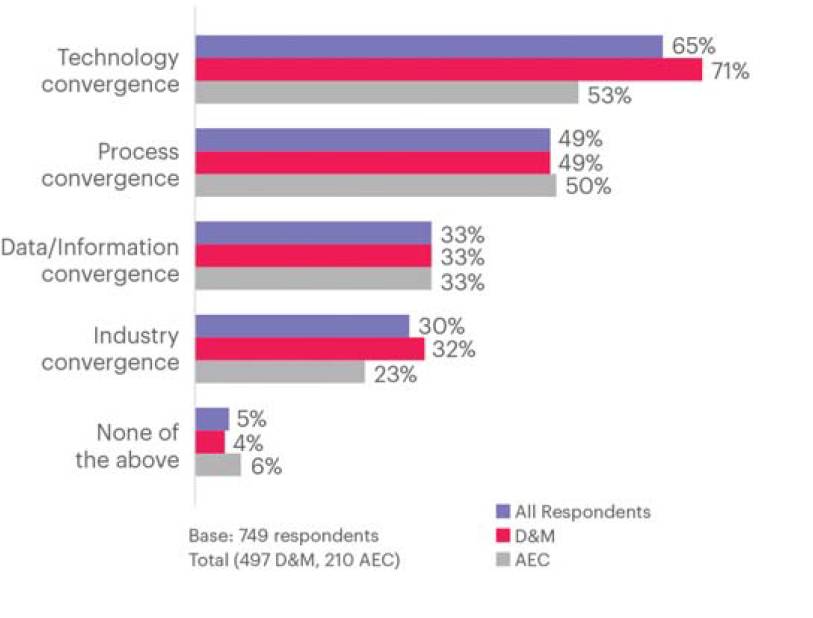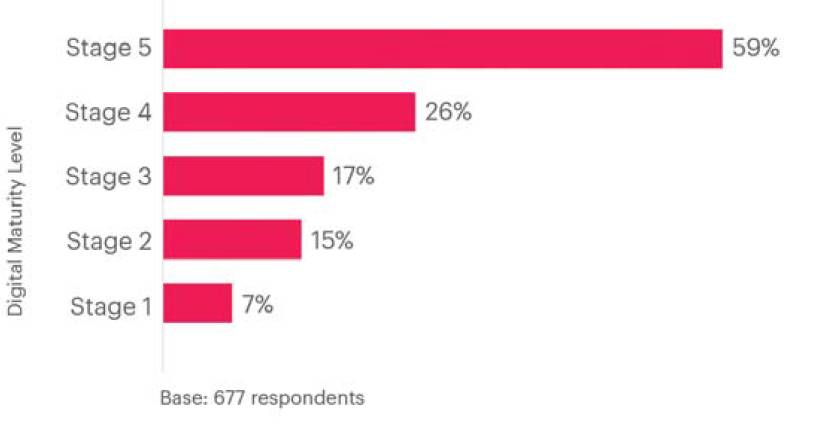Preparing for the next wave of digital disruption
Alexander Stern, Technology Strategist, Autodesk
DIGITALLY mature companies are embracing the next wave of digital disruption known as convergence. Innovative practices such as virtual communications, personalised digital engagement, immersive modelling, rapid prototyping and efficient collaboration are now mainstream due to an accelerated need brought on by the COVID-19 pandemic.

Altimeter and Autodesk surveyed 749 leaders from companies in the US, UK, Germany, France, Japan and China across the architecture, engineering and construction, (AEC), design and manufacturing (D&M) and media and entertainment (M&E) industries. We found that disruptions caused by the pandemic have created two classes of companies:
- The first, at a low level of digital maturity, struggled to implement these innovative practices and is still in the process of catching up.
- The second, at higher levels of digital maturity, had already implemented the latest innovative practices and has thrived. This group is prepared for the next wave of digital disruption, a practice known as convergence.
Convergence
Convergence is the blending of previously separate technologies, processes and data to create new combinations of products, services and experiences that reshape industry processes and structures.
Most businesses today recognise convergence as a trend that will impact them in some form. Our research found that 58% of respondents have either given thought to convergence or acknowledge it is one of the most critical parts of their business. A key takeaway is that digital maturity is a strong predictor of how much a company believes it will be impacted by convergence. To determine how digitally mature a company is, respondents were asked to select one of the following stages to define their business:
- Stage 0: Digital transformation is not a priority for us, nor do we expect it to become one in the short term.
- Stage 1: We’ve just begun to build a business case for digital transformation.
- Stage 2: We’re starting to understand customer journeys, improving digital skills, mapping processes and seeing early traction.
- Stage 3: We’ve begun to digitise our operations at scale, but modernising platforms and processes is happening on a departmental basis.
- Stage 4: We have digitised operations and are now focused on integrating them so that data can be used more strategically across the organisation.
- Stage 5: We have laid a strong digital foundation and are now focused on leveraging data and AI to optimise processes; products and services; and customer experiences.
The first step toward building a digital transformation foundation is understanding all the ways convergence is taking place...
59% of companies with the highest digital maturity (Stage 5) said convergence was one of the most critical influences on their business. As the levels of maturity decrease, so does recognition of convergence as a disruptive trend. This makes sense, as companies that are less digitally mature are playing catch-up, struggling to implement practices and innovations that are the milestones of digital transformation.
This does not mean, however, that less-mature companies should wait until they reach later stages of digital maturity to think about and prepare for convergence. In fact, to reach Stage 5 and reap the rewards of convergence, the foundation for convergence needs to be built as early as possible.
The four levels of convergence
The first step toward building a digital transformation foundation is understanding all the ways convergence is taking place and identify the categories that will have the most impact on the business. The research revealed four levels of convergence:
- Process convergence: Formerly discrete processes and workflows are now being connected across business for greater efficiency and integrated goals.
- Technology convergence: Technologies such as cloud, IoT, AI, supply chain management, augmented and virtual reality are converging to create new use cases and solutions.
- Data/information convergence: Formerly siloed data/ information is now more accessible and being used across business and industry to power a range of new products and services.
- Industry convergence: Formerly discrete industries are becoming more similar and connected, creating new opportunities for value creation.
By creating convergence levels, we can chart the impact each type of convergence has, and how it varies by industry.

Challenges
While the benefits of convergence may seem apparent at every stage of digital maturity, many companies face challenges in implementing the steps they need to take in order to fully realise these benefits.
It is industry convergence – driven by external forces – where the magic happens.Culture
Resistance to change is a problem at many companies, especially large ones with legacy systems and practices.
Data for machine learning
Many innovative processes brought about by convergence are made possible through the power of AI. While AI can be a powerful technology that creates high efficiency, there is a risk of deploying it incorrectly. Feeding AI engines outdated or biased data can create a snowball effect of the machine continuously learning and doing the wrong thing.

Percent who selected ‘Convergence is one of the most critical influences on my business ’business’ against digital maturity level.
Designing for convergence
Convergence requires designers and project planners to have far more expansive, visionary and disciplined thinking than they have had in the past. This requires training, familiarity with, and use of tools that help facilitate this kind of thinking.
Hiring the right skills
As with any other innovation, hiring people with the right skills to thrive on convergence is challenging, especially since they are scarce and in high demand at the start of the disruption curve.
Understanding convergence
Understanding convergence and making it work for your organisation is an under-leveraged competitive advantage. Process, data and technology convergence impacts most the internal workings of a company. It is industry convergence – driven by external forces – where the magic happens.
This is when previously disparate industries, or industries that operate in parallel, find ways to collaborate for mutual benefit.
This collaboration can take many forms, including partnerships, transactional relationships, or simply shared resources.
Alexander Stern, Technology Strategist, Autodesk
www.autodesk.com/campaigns/discover-convergence